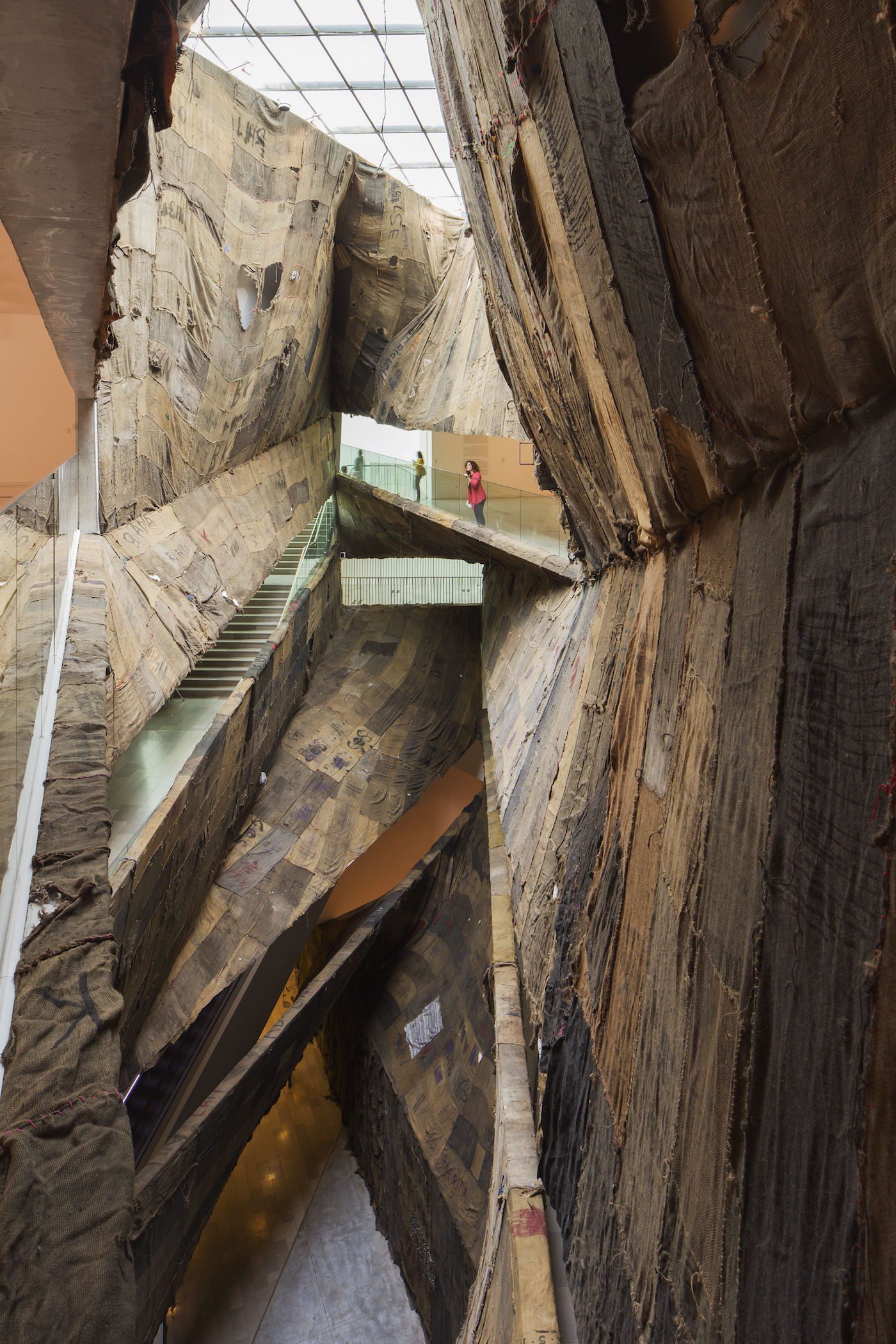In 2019, for the first time, Ghana will host a pavilion at the Venice Art Biennale. It will feature artists of various generations, including El Anatsui, Ibrahim Mahama, Felicia Abban, Lynette Yiadom-Boakye, John Akomfrah, and Selasi Awusi Sosu, spread across a site designed by British-Ghanain architect David Adjaye. Curated by Nana Oforiatta Ayim, the exhibition has “Ghana Freedom” as a theme (after E.T. Mensah’s independence song) and counts the late Okwui Enwezor as strategic advisor. Will Furtado speaks to Ayim about the pavilion’s organization and how she thinks it may contribute to Ghana's artistic and political landscapes.

John Akomfrah. Mimesis: African Soldier, 2018. Three channel HD colour video installation, 7.1 sound Dimensions variable. Co-commissioned by 14-18 NOW, New Art Exchange, Nottingham and Smoking Dogs Films, with additional support from Sharjah Art Foundation. Photo © IWM / Film © Smoking Dogs Films
C&: The pavilion, designed by no less than David Adjaye, has a very particular elliptical shape.
Nana Oforiatta Ayim: The concept is inspired by the interconnected earthen architectural shapes you see throughout West Africa, with laterite soil sourced from Ghana.
C&: Could you talk me through the artist selection and the decision to invite artists who are former participants at Venice?
NOA: We wanted a plurality of outlooks and voices as it’s Ghana’s first showing, and we have quite a few artists who are at the height of their mastery, both at home and abroad. We wanted to see what would happen if we got them all into the same room, so to speak. I wanted a balance or cross-section across generations, genders, and artists rooted in Ghana, as well as in the Diaspora.

Ibrahim Mahama. Fracture. Tel Aviv Museum of Art. 9 December 2016 – 27 May 2017. © the artist. Photo © Ibrahim Mahama. Courtesy White Cube
C&: Are there any new commissions? How do the proposed works fit into the “Ghana Freedom” theme?
NOA: All works are newly commissioned, except for Felicia Abban’s. In their different formats and iterations, the works all allow one to question, to explore more deeply, the notion of Ghana as a country and as an idea, as well as how far we’ve really come since our formation or independence, and how this expresses itself in our environment, our representations, our constructions of memory and history.

Lynette Yiadom-Boakye. A Whistle in a Wish. 2018. Oil on canvas, 75.5 × 70 cm. Courtesy the artist; Corvi-Mora, London; and Jack Shainman Gallery, New York.
C&: How do you think this pavilion can contribute to Ghana’s artistic and political landscapes?
NOA: It will be exciting to see what evolves from this. It’s the first time since the epoch of Kwame Nkrumah [Ghana’s first president after independence from Britain in 1957] that a government has thrown its weight so firmly behind cultural expression and resonance, and it’s a great starting point for what comes next. On the artistic side, I’m excited to see how it impacts younger artists, writers, and curators, especially when we embark on our platforms in Ghana, when we bring the exhibition home after Venice.
Ghana’s National Pavilion shows at the 58th International Art Exhibition of La Biennale di Venezia, Artiglierie Arsenale, from 11 May through 24 November 2019.
Nana Oforiatta Ayim is a Ghanaian writer, art historian and filmmaker. She is the founder and director of ANO Institute of Arts & Knowledge in Accra.
Interview by Will Furtado.
More Editorial